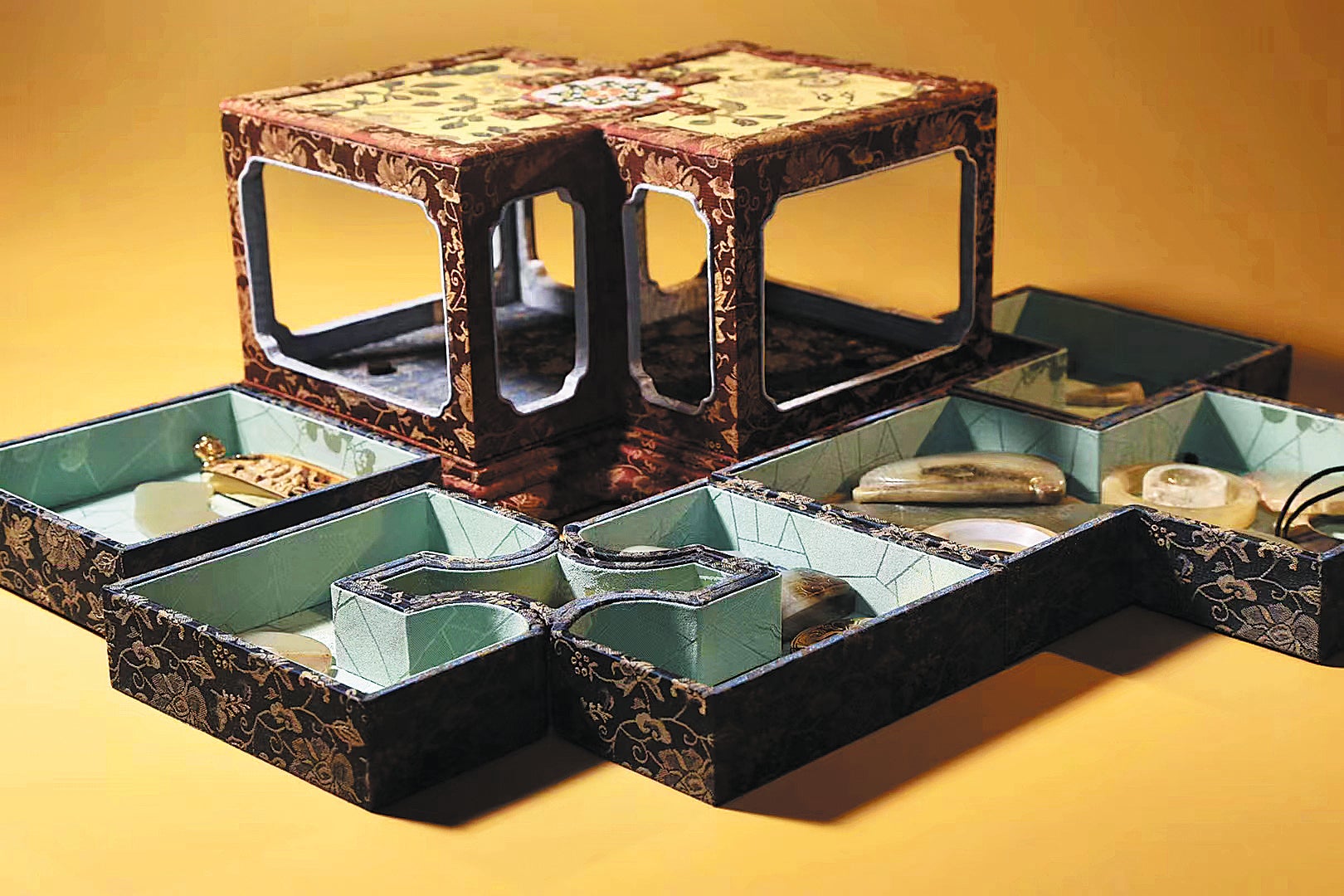Packaging art puts beauty in eye of the beholder
THE ARTICLES ON THESE PAGES ARE PRODUCED BY CHINA DAILY, WHICH TAKES SOLE RESPONSIBILITY FOR THE CONTENTS

A famous proverbial story in ancient China tells about a man from the State of Chu in the Warring States Period (475-221 BC), who went to great lengths to make a jewellery box out of magnolia to sell a pearl.
He smoked the small receptacle with spices to give it a lasting fragrance and added exquisite ornamental pearls and jade. So effective were his embellishments that when he sold the boxed pearl, the customer returned the content and just kept the box.
This tale by philosopher Han Fei, who lived in the third century BC, has been open to many interpretations, one of the most popular being about bad choices and failure to recognise what is more important.
However, it shed light on the act of packaging valuables in beautifully crafted wooden boxes, a craft that appeared in ancient times.
With the vigorous development of textiles and paper manufacture during the Song Dynasty (960-1279), paper boxes came into being. They were favoured by the literati for their simple yet beautiful and elegant characteristics.
This type of paper box is made of grass cardboard, with the outside being framed with Song brocade featuring gorgeous colours and a soft texture. The inside is lined with cotton to make a rich, soft pocket, which was originally used to carry fragile items, such as inkstones and ink ingots, and later thread-bound books.
The art form continued to flourish throughout the Ming (1368-1644) and Qing (1644-1911) dynasties, and manifested itself in various shapes and sizes, from jewellery boxes and cabinets, to royal goods and gifts given by dignitaries. The Qing court even brought together artisans in the trade to make such packaging.
Today, in North China’s Tianjin, Gao Fuhao has committed himself to carrying on this ancient craft, which in 2021 was named as a National Intangible Cultural Heritage.
“In a narrow sense the craft is about making a set of packaging for cultural and playful items commonly known as brocade boxes,” says Gao, adding that the main purpose is to protect the contents from bumps and prolonged exposure to the external environment.
“In a broad sense it goes beyond the production of outer packaging and involves a certain level of cultural relics protection and repair, similar to the business of the workshops at the royal palace in ancient times.”
Gao considers it a process of artistic re-creation, and he regards his mission as being to deliver a complete work of art.
The process of making an artistic container involves several preliminary steps, including conceptualising the design, sketching the blueprint and choosing the materials.
During production a dozen steps are taken, such as measuring the dimensions, cutting fabrics, building the frame and making the paste, the interior and the clasp.
“The design must be based on the characteristics of the item it will house, using luxurious and auspicious patterns that render a harmonious effect inside and out,” Gao says, adding that traditional cutting techniques are also applied.
As for the materials used for the packaging container, they may vary with the variety of the items, depending on factors such as the collectible’s capacity to withstand force.
“Hard materials include paperboard, various types of wood and composite board, and soft materials range from brocade, satin, silk, linen and cotton.”
The next step is to glue the panels of the box together, which takes between two and seven days.
“It is important to ensure that the surface is smooth and wrinkle-free after the fabric is pasted onto the periphery of the box, with no corners left exposed, and that the pattern and design are even and natural.”
The most crucial step, he says, is making the interior.
“That directly relates to the protection of the antique and highlights its features.”
The materials should be carefully chosen and meticulously applied, he says.
The final step is to make the clasp and buckle, which can be made out of jade, bone or wood, and can come in various forms.
Subscribe to Independent Premium to bookmark this article
Want to bookmark your favourite articles and stories to read or reference later? Start your Independent Premium subscription today.